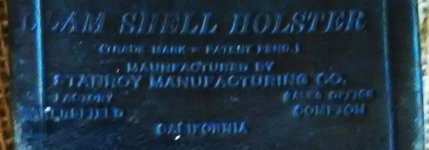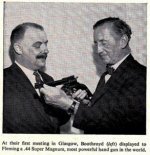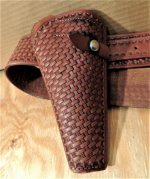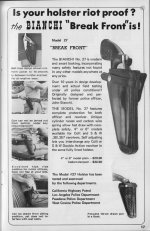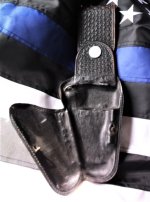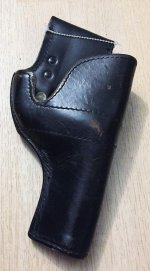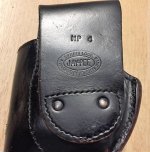OK. This thread inspired me to do a bit more hunting in various databases online; which reminds that searching in them invokes the Butterfly Effect of chaos theory. A database like Newspapers.com, for example, takes spelling quite literally and doesn't offer up equivalents; so if one misspells a name it might actually be in the database that way! Example, is D.A. Jelly Bryce whose surname sometimes appears there as Brice; stumble across that and get new info

.
Here, it seems that although like J.E. Berns with the Berns-Martin, F.C. Jewett was the inventor; he was not the maker. With B-M it was Martin who made them and with Jewett is was a partner Al Northey who actually made them. This matters not least because of their death dates.
Both were born late 19th century and it was Jewett who was a California police officer; various sources indicate he was S.O. but his draft registration in '42 shows his employer as Delano P.D.. He was in a partnership with Northey and his wife, with Engelman and his wife, and third person who was a lawyer-turned-senator.
It all seemed to come apart for the group just before the War: Jewett's wife who was a Stanroy (remember that name) divorced him in '39, in '40 Engelman and his wife sold out to Northey in a partnership dissolution, in '42 Jewett has had to register for the draft (having now lost his marriage exemption), in '48 he has died.
An extensive history published in a July 1954 newspaper article reveals that Northey made the metal cases entirely on his own; and his wife Amelia assembled the leather onto them. At that time the two had made 30,000 (!) of them that way and he built them in lots of 1,000.
The operation is called the Jewett Safety Holster Co. in Bakersfield yet there is no appearance of that corporation in the Cal Sec'y of State database; which suggest it was not actually incorporated (which is what the word 'Co.' is supposed to indicate).
Northey died in '60. I expect that this is where the handoff to Boren at Safety Speed took place because he has married in '62.
There are Stanroy versions of the Speed Holster, that being the family name of Jewett's ex-wife. They feature the wire loop for the trigger blocking device as do the Northey versions; but not the Hoffman or Safety Speed versions. Stanroy also does not appear in the Cal Secy of State database as a company.
View attachment 383723

